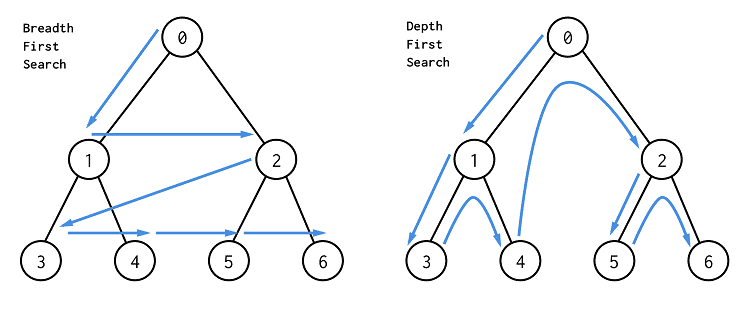BFS and DFS are the most popular search algorithm in the world. BFS stands for breadth first search while DFS stands for depth first search. They are used for finding an element in the graph. Both the algorithms are effective in different scenarios, and therefore, there are a lot of differences between the two search algorithms. For a programmer, it is highly important to understand the differences so that they can decide which one to use in which scenario.
Basic Difference –
The basic differences in the two algorithms lie in their approaches. BFS algorithm is all about searching level by level. Therefore, it searches horizontally before moving to the next step. In the DFS algorithm, the searching is done from the root to the leaf following one path. Therefore, it is a vertical searching, and it searches from start to end following one path before moving to the neighbor from the beginning once again.
Another major basic difference is that BFS uses a queue for storing the nodes that it is visiting while DFS uses a stack while traversing the nodes. In short, you can say that BFS is vertex-based algorithm while DFS is an edge-based algorithm.
In BFS, a node is fully explored before moving to another node which apparently seems to be the right approach, but it is not in many ways. On the other hand, in DFS, a full node is not explored as when it finds a new node which is unexplored.
Memory Management –
BFS is slower, and hence, it requires more memory in comparison to DFS. DFS is very much recursive, and DFS minimizes the overhead. In fact, the space complexity is more critical compared to time complexity in BFS. On the other hand, DFS has less space complexity, and it needs to store one path at a time from the root to the leaf or edge. BFS follows FIFO policy and DFS comes with LIFO.
Application –
There is no algorithm in the world that is perfect. There are always some shortcomings, and therefore, a programmer needs to know when to apply the algorithm. In general, the BFS algorithm is used for finding all the connected nodes or components in the graph as it goes for full node searching. Moreover, BFS is used for finding the shortest path between two nodes. Besides, it is also popular for examining the bipartite graph.
On the other hand, DFS is used for topological storing, finding connected nodes or components. Similarly, DFS algorithm is the most preferred for finding articulation points and solving puzzles like in a maze. In general, if a value is likely to be found near to the root and in the upper branches, BFS is better.
Conclusion –
Therefore, when you know or assume that the search will not run for long, you can go for BFS. However, DFS is always more recommended due to its recursive nature, better memory management, and faster execution. You should understand the application and use them accordingly to make your code for efficient and effective.

